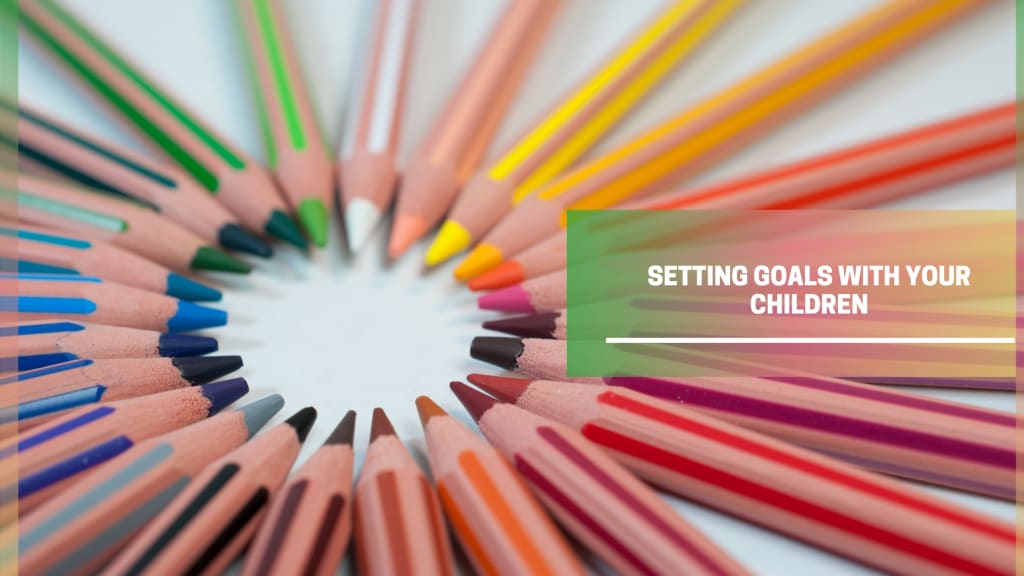Setting Goals with your Children
Here are some ideas for making goal-setting enjoyable and involving the entire family.

Goal-setting is one of the most important lessons a child can learn with lesson plan template preschool. By teaching your children the importance of goal-setting, you will empower them to always strive for the best, increasing their chances of success in life.
Making goal-setting fun and educational also teaches your child to take responsibility for their actions and promotes a positive "can-do" attitude. Here are some ideas for making goal-setting enjoyable and involving the entire family.
Other advantages of goal setting for children include:
- Improved self-esteem
- Increased awareness of one's own abilities
- Increased awareness of one's own flaws
- Providing a successful experience
- Promotes prioritisation
- Determining reality and distinguishing it from wishful thinking
- Creating a sense of accountability
- Improved decision-making and critical thinking
The basic idea behind goal-setting with young children is to help them develop a long-term mindset of thinking, planning, and taking action to achieve their goals. Goal-setting for children is thus the same as it is for adults, with a few minor adjustments to account for cognitive and emotional development. Goals simply need to be made smaller, more specific, and more attainable. These objectives can be physical, social, intellectual, or spiritual.
Before you begin the process of goal-setting with your child, you should explain what a goal is, the importance of goal-setting, and how satisfying it is to achieve your goals. A good way to convey this to children is to give a specific example of a goal you set for yourself and how you worked to achieve it. Children learn by example, so understanding how their parents work on goal-setting is beneficial. Create a new goal for yourself and go through the goal-setting process with your child to make the process more engaging.
So, how do you teach your children to set goals for themselves?
Here's a 5-step process for assisting your child in developing and tracking personal goals.
Pick an Attainable Goal
Once your child understands how goal-setting works, ask him or her to describe in detail a few goals that they would like to achieve. It is critical that you allow your child to come up with ideas for their goals. As parents, we can serve as guides as they develop their goals and foster an open dialogue about the purpose of their goal ideas. Also, while making a list of goal ideas is enjoyable, only concentrate on one or two at a time.
Preschoolers should have the following goals:
- I will clean up my toys
- I will learn how to make my bed
- I will brush my teeth twice a day
- I will read two books a night
- I will set the table for dinner two to three nights a week
Develop a Plan of Action
Now that the goal has been established, it is time to discuss a strategy for achieving it. Assist your child in writing down their goal and the steps they will take to achieve it. Make plans to go over the steps with your child as often as needed to guide and keep them motivated to reach their goal.
When working with your child to create an action plan, it's important to spend some time brainstorming potential roadblocks. What are some potential roadblocks to their success? How can you assist them in anticipating these events and devising a strategy to overcome them? This step is an excellent way to teach your child how to deal with adversity and adjust their strategy as needed with the help of assistive technology for preschoolers. If you assist your child in anticipating these, they will be less discouraged if an obstacle arises.
Track Progress
Tracking progress is a critical component of goal-setting. Young children are easily discouraged. You want to track these smaller actions, not just the larger goal, because you've broken down the goal into an action plan.
Make tracking their efforts enjoyable! Make a poster for their fridge or the wall in their bedroom. Provide small rewards for completing each step of their action plan, such as putting a sticker on a poster or deciding what to eat one night.
Course Correct when Needed
Of course, as previously discussed, things rarely go as planned. They are less likely to become discouraged if you help them plan for it ahead of time.
You may need to make adjustments as your child works through each step of their action plan to help the goals become more attainable. While tracking progress, go over the entire process and commend everyone on their efforts. Even if your child did not achieve the ultimate goal and had to make adjustments, it is critical to discuss everything your child learned and to praise the hard work that was put in.
Celebrate Achievements
After weeks of hard work, your child has finally accomplished their goal. Regardless of the size of their goal, this is a huge accomplishment.
By instilling the concept of goal-setting in your children at a young age, you are providing them with an invaluable skill that they will use throughout their lives.
What if your child becomes bored or wants to abandon their goal?
We've all been there: that point where we begin to doubt ourselves and become discouraged. We ask ourselves questions like, "why am I even trying to do this?" when things start to get tough.
This also happens to our children.
The best way to keep your child focused is to keep reminding them of the purpose of their goal and reviewing the action plan they developed with them. It's also critical that you consistently recognise and praise them for their efforts, whether they were successful or not, in order to teach them that what matters most is their effort and persistence.
With the end of the year quickly approaching, now is an excellent time to reflect on the previous year with your family, discuss things you're grateful for, and start thinking about each of your goals for the coming year.
About the Creator
Amit Kumar
Full-time thinker & part-time writer...






Comments
There are no comments for this story
Be the first to respond and start the conversation.